Neighborhoods / Communities
St. Louis City Neighborhoods
Indexed Sources
- Baden Through the Years, Rev. ed. St. Louis: Lutheran Altenheim Society of Missouri, 1976. R 977.866 B134
Indexed Sources
- Harris, Nini. Bohemian Hill: An Ameircan Story, 1847-1928. St. Louis: St. John Nepomuk Parish, 2004. R 977.866 H313B and circulating copy
Indexed Sources
- Toft, Carolyn Hewes. Carondelet: The Ethnic Heritage of an Urban Neighborhood. St. Louis: Washington University, 1975. R 977.866 C293 and circulating copy
- Reflections of Carondelet: Our Diamond Anniversary, 1891-1966. St. Louis: Southern Commercial Savings Bank, 1966. R 977.866 R332 and circulating copy
Indexed Sources
- Drummond, Malcolm and Walter L. Eschbach. Down by the Gravois: The photography of Richard Gruss, South St. Louis, 1900 Through the 1920's. R 977.866 G892D
Indexed Sources
- Hunter, Julius K. Kingsbury Place: The First Two Hundred Years. St. Louis : Mosby, 1982. R 977.866 H945K and circulating copy
Indexed Sources
- Gass, Mary Henderson. Parkview: A St. Louis Urban Oasis, 1905-2005. St. Louis: Virginia Publishing, 2005. R 977.866 G251P and circulating copy
Indexed Sources
- Abbott, Mark. Tower Grove. St. Louis: Reedy Press, 2009. R 977.866 A133T and circulating copy
Indexed Sources
- Toft, Carolyn Hewes and Bailey, Charles. The Ville: The Ethnic Heritage of an Urban Neighborhood. St. Louis: Social Science Institute, Washington University, 1975. R 977.866 V728
Indexed Sources
- Hunter, Julius K. Westmoreland and Portland Places: The History and Architecture of America's Premier Private Streets, 1888-1988. Columbia, Mo.: University of Missouri Press, 1988. R 977.866 H945W and circulating copy
St. Louis County Communities
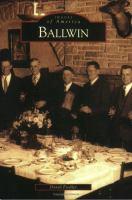
Ballwin by David Fiedler
ISBN: 0738534463
Publication Date: 2005-11-09
At the tender age of 21, a settler named John Ball bought 400 acres on Grand Glaize Creek in 1800 and began sowing crops and tending livestock. He had moved with his parents to Missouri as part of a migration of Kentucky settlers led by Daniel Boone and wanted to establish himself as his own man. That purchase and Ball's later platting of 17 city blocks along Manchester Road, the designated route to the state capitol, were the first steps in creating the town we know today as Ballwin. Using archival photographs from the Ballwin Historical Commission and other sources, Ballwin traces the history of the area from the first settlers through to the present, focusing on the period since the city was incorporated.
A History of Ballwin, Missouri by Caverly Scott Wallace; Dorothea M. Loehr
Call Number: R 977.865 W187H
Publication Date: 1979
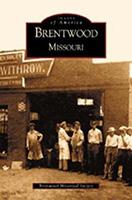
Brentwood, Missouri by Brentwood Historical Brentwood Historical Society Staff
ISBN: 0738520217
Publication Date: 2002-10-09
The mail coaches and prairie schooners traveling west in the late 1800s on the Manchester Trail would have stopped in what is today known as Brentwood. Maddenville, as the area was then called, was named after a prominent businessman who owned a grocery store, barbershop, rock quarry, and blacksmith shop. While some travelers took respite in Porta's Tavern and pressed westward, others never left the community that later grew, along with the railroad, into a bustling community just outside St. Louis. This collection of words and images by the Brentwood Historical Society brings to life the small-town values and humble history of "The City of Warmth." In this book, more than 200 historic photographs portray the days when the Brentwood Dinky streetcar ran from St. Louis, Link's Chicken Farm became infamous, and Louis J. "Pat" Bompart, grandson of Brentwood's founder, bought tavern patrons round after round of drinks. Pictured here are the schools, churches, businesses, and festivals that have endeared residents to Brentwood since its earliest days as a whistle stop.
The Golden Anniversary History of Brentwood, Missouri, 1919-1969; compiled from personal interviews, recollections, and city records by Brentwood Anniversary Committee, E. Robert Eastin
Call Number: R 977.865 B839G
Publication Date: 1969
Bridgeton Since 1794 by Bridgeton (Mo.). Historical Commission
Call Number: R 977.865 B851B
Publication Date: 1968
Home Place: A Celebration of Life in Bridgeton, Missouri by Jane Mobley
Call Number: R 977.865 M687H
Publication Date: 1993
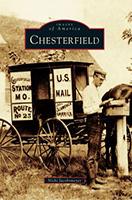
Chesterfield by Nicki Jacobsmeyer
ISBN: 1467124397
Publication Date: 2016-12-12
Arriving in 1815 by boat at Howell's Landing off the Missouri River was Chesterfield's founder, Col. Justus Post. Chesterfield, Missouri, is a distinct city because it did not grow from a single "named community" like most. It was once six separate towns, each with its own post office. The history of these communities and families that lived in them interweave to make a remarkable story that still lives on in the city of Chesterfield. Since the beginning, the town has strived to serve its community with exceptional schools, places of worship, public services, and businesses. The railroad, steamboats, and later the airport aided the economy, and the city began to thrive. Chesterfield became incorporated in 1988 with the support of many, including the chamber of commerce, businesses, renowned schools, and dedicated citizens. The city continues to grow because of the seeds that were planted over two centuries ago. The rich history is embedded in the people, streets, and buildings that stand today.
A Guide to Chesterfield's Ancient History by Mark W. Leach; Patti J. Wright, edit.
Call Number: R 977.865 L434G
Publication Date: 2002
A Guide to Chesterfield's Architectural Treasures by Dan A. Rothwell
Call Number: R 977.865 R845G
Publication Date: 1998
Portrait of an American Town - Chesterfield, Missouri by Kim Potter
Call Number: R 977.865 P867P
ISBN: 0963178709
Publication Date: 1992-01-01
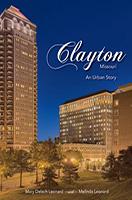
Clayton, Missouri by Mary Delach Leonard; Melinda Leonard
ISBN: 1935806335
Publication Date: 2012-09-01
In 1878, Ralph Clayton and his neighbors Martin Franklin and Cyrene Hanley donated 104 acres of farmland so that St. Louis County could build a courthouse and county seat. The townsfolk who pushed to incorporate Clayton, Missouri, in 1913 had little reason to suspect that their rural outpost of small frame buildings and plank sidewalks would later be recognized as
a progressive metropolitan hub—one carefully buffered from quiet tree-lined neighborhoods and gorgeous parks.
Clayton, Missouri: An Urban Story reveals the making of a city and the people who built it as a community. This lavishly illustrated book tells Clayton’s story through historical anecdotes and the voices of residents, timelines, and pullout sections on key facts and figures, plus stunning photographs of modern street scenes and nostalgic images of the city’s past. Also highlighted are important city leaders and residents who looked to the future at critical moments. Their efforts helped yield the Clayton of 2013, where magnificent steel and glass high-rises reach to the sky within blocks of historically splendid homes, many of them designed by noted architects of the twentieth century.
Images of our Community, Clayton by Members of Wydown Eighth Grade of 1976
Call Number: R 977.865 I31
Publication Date: 1976
Clayton: a History by Dickson Terry
Call Number: 977.865 T329C
Publication Date: 1976
The Crestwood Story: A Glimpse into the Origins of the Gravois Creek Settlement by Neva Wasson
Call Number: R 977.865 C922
Publication Date: 1997
Creve Coeur and Surrounding Area
Call Number: R 977.865 C926
Publication Date: 1968
Heritage of the Creve Coeur Area by Gloria Dalton
Call Number: R 977.865 D152H
Publication Date: 1976
Under the Dove - A Collection of Memories by Lynne Lang
ISBN: 0972306706
Publication Date: 2002-08-01
A collection of stories and historical information about a sign at a shopping center. This lighted dove has been a local landmark since 1969, and has served as a significant point of reference for meeting travel and memories.
A History of Des Peres, Missouri by Carl F. Stolwyk
Call Number: R 977.865 S876H
Publication Date: 1976
City of Ellisville by Carolyn Jolly Pratt
Call Number: R 977.865 C581
Publication Date: 1976
Part 1: Early History--Part II: The growth of Ellisville--Part III: Your city government
Golden Anniversary of Ellisville, Missouri, 1931-1982 by Chylene Jahn Daub
Call Number: R 977.865 D235G
Publication Date: 1983
Early history--Ellisville 1932-Celebration-Ellisville 1982-History in our midst; includes bibliographic references (p. 227)
River City: The Story of Fenton, Missouri by Della Lang
Call Number: R 977.865 L269R
Publication Date: 1992
Includes bibliographic references and index.
Ferguson: A City and its People by Irene Stanford Smith
Call Number: R 977.865 S649F
Publication Date: 1976
Ferguson, A City Remembered: Pictorial History by Ferguson Historical Society
Call Number: R 977.865 F352
Publication Date: 1994
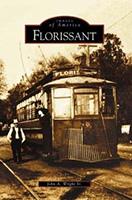
Florissant by John A. Wright
ISBN: 9780738532554
Publication Date: 2004-06-02
The first civil government in Florissant was established in 1786, three years before the United States adopted its constitution and George Washington was elected the country's first president. French farmers and fur trappers looked upon the land and called it the "Valle Fleurissant"-which is to say, "the flowering or fertile valley." The community remained small until after World War II. Between 1950 and 1980, the population grew from 3,737 to 76,754. Today the community strives to preserve its proud heritage and build on the strength of its diverse population. The historic images in this book illustrate the city's founding and development, from the first French settlers to the post World War II building boom to the exciting new city of today.
Florissant Missouri by Rosemary S. Davison
Call Number: R 977.865 D265F
Publication Date: 2002
City of Glendale by Alexander C. Niven
Call Number: R 977.865 N734C
Publication Date: 1987
Oakland: A History of the People & Their Homes by Suzanne Stewart Bolten
Call Number: R 977.865 B694O
Publication Date: 2011
The Town of Grantwood Village, Missouri by Katy A. Forand; Kevin Bley; Grantwood Village Preservation Society Staff (Contribution by)
Call Number: R 977.865 N734C
ISBN: 1578647770
Publication Date: 2012-09-01
Jennings the Man, the City and its People by Linda Ciolek Schmerber
Call Number: R 977.865 S347J
ISBN: 0983413630
Publication Date: 2011-06-01
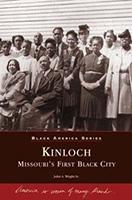
Kinloch by John Wright
Call Number: R 977.865 W951K
ISBN: 0738507776
Publication Date: 2000-11-27
Located just outside of St. Louis, Kinloch was once a community locked off from the rest of the area by natural and man-made barriers. In spite of a lack of financial resources, it once provided its residents with a school district, city hall, post office, business district, and recreational facilities. Residents will recognize Dunbar Elementary, the oldest school for blacks in St. Louis County, Holy Angels, the oldest continuing black parish in the St. Louis Archdiocese, as well as former residents Congresswoman Maxine Waters and political activist Dick Gregory. Eventually, due to insufficient revenue, this once thriving community fell into decline, and is now struggling to keep its small town values and ideals alive.
Kinloch: Yesterday Today and Tomorrow by Kinloch History Committee
Call Number: R 977.865 K55
Publication Date: 1983
Historic Kirkwood Landmarks by Kirkwood Landmarks Commission
Call Number: R 977.865 K59H
Publication Date: 2001
Kirkwood by Vicki Berger Erwin for the Kirkwood Public Library
ISBN: 1467110043
Publication Date: 2013-07-15
In St. Louis in the 1850s, citizens were tiring of the crowded and unhealthy conditions of urban living, but there were few convenient alternatives for those who worked in the city. When the Pacific Railroad decided to build a line through an outlying area then known as Collins Station, Hiram Leffingwell and Richard Elliott seized an opportunity and bought the surrounding land. Using Leffingwell's experience in planning additions to the city, he and Elliott developed the first planned suburban community west of the Mississippi River. The area was named Kirkwood after the chief engineer for the Pacific Railroad, James Kirkwood, who chose the railroad's route. Kirkwood officially incorporated in 1865. Today, it is still referred to as the "Queen of the Suburbs" for its housing stock, convenient transportation, shopping, and excellent schools.
Kirkwood, the Greentree City: A Pictorial History by Barbara J. Byerly and J. B. Lester
Call Number: R 977.865 K59
Publication Date: 1994
A Pictorial Glimpse of Early Kirkwood by Kirkwood Area Chamber of Commerce
Call Number: R 977.865 P611
Publication Date: 1989
Ten Historic Houses: The Stories and Histories of Ten Fascinating Kirkwood Homes by Betty Murphy Beck
Call Number: R 977.865 B393T
Publication Date: 2001
Transitions Through Time: New Uses for Kirkwood's Historic Buildings by Kirkwood Historical Society. History Committee
Call Number: R 977.865 K59T
Publication Date: 2008
The Wonderful City of Kirkwood: 100 Years Young, 1865-1965 by Kirkwood Centennial Committee
Call Number: R 977.865 W872
Publication Date: 1965
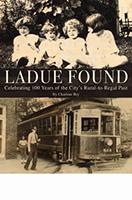
Ladue Found by Charlene Bry
Call Number: R 977.865 B915L
ISBN: 1891442686
Publication Date: 2011-05-06
The Lost Ladue: The Recovered Story of the Life of Peter Albert Ladue, namesake of Ladue, Missouri by Lynne Orgel
Call Number: R 977.865 O68L
Publication Date: 1996
Historic Lemay, 1700-1945: A Collection of Historic Beginnings, Historic Places, Historic Events, Historic Buildings, Historic Persons by Vernon G. Schertel
Call Number: R 977.865 S326H
Publication Date: 1995
It Happened in Lemay by William F. Alden
Call Number: R 977.865 A359I
Publication Date: 1958
Manchester Treasures, in and around Manchester, Missouri: Exploring the Treasures of Manchester, Missouri, both Present and Past by Frank C. Masotto
Call Number: R 977.865 M412M
Publication Date: 2011
The History of Maryland Heights by Paul H. Thompson
Call Number: R 977.865 T475H
Publication Date: 2010
Normandy, Missouri, History of Normandy by Doris Benz
Call Number: R 977.865 B479N
Publication Date: 1973
History of St. Louis Neighborhoods: Oakland and Clifton by Saint Louis (Mo.). Community Development Agency
Call Number: R 977.866 S145H
Publication Date: 1980
Oakland: A History of the People & Their Homes by Suzanne Stewart Bolten
Call Number: R 977.865 B694O
Publication Date: 2011
A Starting Point: A History of the Oakville-Mehlville-Concord Village Community by Jean Fahey Eberle
Call Number: R 977.866 E16S
Publication Date: 1993
Foundations of a Community: Oakville Before the Turn of the Century by Barbara Messmer Waddock
Call Number: R 977.865 W118F
Publication Date: 1977
Olivette: Chronicle of a Country Village by Barbara Kodner
Call Number: R 977.865 K76O
Publication Date: 1979
A History of Rock Hill by Celeste Wagner Blann
Call Number: R 977.865 B642H
Publication Date: 1976
History of Sappington, Missouri / Seventh and Eight Grade of Sappington School by Sappington School
Call Number: R 977.865 H673 02-2000
Publication Date: 1937
Shrewsbury of all Places: A History of Our Town by Helen G. McMahon
Call Number: R 977.865 M167S
Publication Date: 1978
The History of Sunset Hills: Sunset Hills, 50 years, 1957-2007 by Sunset Hills Historical Society, 50th Anniversary Committee
Call Number: 977.865 H673
Publication Date: 2006
Landmarks of Sunset Hills, Missouri by Edward J. Thias
Call Number: 977.865 L257
Publication Date: 1995

Sunset Hills by Sandie Grassino for the Sunset Hills Historical Society
Call Number: 977.865 G769S
ISBN: 9780738584089
Publication Date: 2012-07-23
Over the course of its history, Sunset Hills was known by many names before its incorporation in 1957. For many families, however, it has always been a constant; some Sunset Hills families are seventh-generation residents on land that was granted or purchased early in America's history. Early settlers were drawn to this community by the salt springs and clay mines. Indian tribes also utilized this area as an early regional site for trade and multi-tribal meetings along the Meramec River. The Meramec Landing Site was historically significant to both the tribes and the settlers, and the community formed eastward from this spot on the river, toward St. Louis. Today, the city encompasses over nine square miles. Largely considered a commuter suburb for St. Louis, Sunset Hills possesses its own rich history and strong sense of community.
Legacy of Lions by Eileen Nini Harris
Call Number: R 977.865 H313L
Publication Date: 1981
University City Landmarks and Historic Places by Judy Little
Call Number: R 977.865 L778U
Publication Date: 1997
Urban Oasis: 75 Years in Parkview, a St. Louis Private Place by Parkview Book Committee
Call Number: R 977.866 U72
Publication Date: 1979
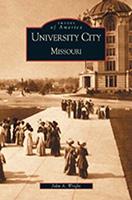
University City, Missouri by John A. Wright
ISBN: 9780738520063
Publication Date: 2002-09-05
In 1904, from a plot of land that would soon become University City, eccentric publisher Edwin Gardner Lewis shone the beam of what he claimed was the world's largest searchlight over the World's Fair in nearby St. Louis. Several years later, he claimed an even greater possession: a city, created around his publishing complex, complete with his own mayoral office, wide boulevards, and beautiful residences. The story of University City is one of urban wonder: from the city's "Hilltop Neighbor" and namesake, Washington University, to the diversity showcased in today's University City. The historic images in this volume illustrate the area's founding and development, from the largest printing press of the time, capable of producing 300,000 eight-page newspapers an hour, to the lion sculptures at the city's famed "Gates of Opportunity," standing proud as the city's everlasting symbol.
The History of Valley Park through the 20th Century by Ken Curtis
Call Number: 977.865 C979H
Publication Date: 2010
Valley Park, Missouri in 1909
Call Number: R 977.865 V187
Publication Date: 1981
Arpens and Acres: A Brief History of Webster Groves, Missouri by Marilynne Bradley
Call Number: R 977.865 B811A
Publication Date: 1975
City of Century Homes: A Centennial History of Webster Groves, Missouri by Marilynne Bradley
Call Number: R 977.865 B811C
Publication Date: 1995
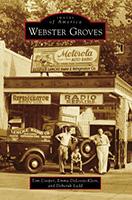
Webster Groves by Tom Cooper; Emma DeLooze-Klein; Deborah Ladd
ISBN: 9781467113656
Publication Date: 2015-04-20
Drive down almost any street in Webster Groves and one is filled with a sense of timelessness. Entire neighborhoods are in the National Register of Historic Places, and there are lovingly preserved century homes, beautiful old churches, avenues lined with gardens, and shopping districts more reminiscent of small-town America than a thriving suburb next door to the city of St. Louis. History runs deep here, as it is home to the first chapter of the Red Cross and the first Boy Scout Troop west of the Mississippi, the oldest women's organization in Missouri, the first professional fire department, and the first public library in St. Louis County. North Webster once held the only accredited high school for African American students in St. Louis County. Beginning as a site of country homes for St. Louis professionals, growing through a post-World War II boom that expanded into new neighborhoods, Webster Groves has remained true to its heritage and history.
